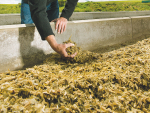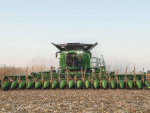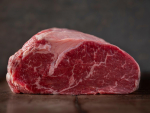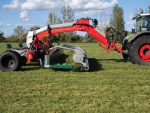Earlier signalling by the dairy industry of how many hectares of maize silage is required each season would assist maize growers to better plan their planting programmes, says the Foundation for Arable Research’s Ivan Lawrie.
This follows an unprecedented rollercoaster ride for prices and demand in the last two years, with the market disruption caused by the war in Ukraine in early 2022 spiking prices of grains internationally.
In New Zealand, the market highs quickly turned downwards as maize growers sought to catch the tail-end of high prices, just as the dairy market reduced demand for silage and international prices plummeted.
As whatever maize is not bought by dairy farmers for silage is taken through by growers for grain, this led to an oversupply of maize grain in the North Island, which was exacerbated by a shortage of storage facilities.
According to data from the Arable Industry Marketing Initiative (AIMI), a survey of grower intentions, sowings, harvest tonnages and sales, the area planted in maize has remained quite stable since 2019 at around 55,000 to 58,000ha intended for silage and 15,000 to 17,000ha for grain.
“These are survey figures of course, and the final use of the crop can vary according to the season, but on the whole that proportion did not vary too much until the 2024 season,” Lawrie says.
Tonnage figures show that production of maize silage is less variable on an annual basis than grain production, with grain yields more vulnerable to seasonal conditions.
The 2023 harvest in particular saw tonnage of both crops drop significantly due to the extreme weather conditions, notably Cyclone Gabrielle.
AIMI figures show that most of the maize grain (around 90%) is sold under contract with prices fixed well ahead of harvest.
“New Zealand local grain prices do not necessarily follow the international trend due to our isolation, but this only happens to a point. While the local dairy pay-out prices correlate more closely to all grain prices in New Zealand due to demand, if there is an availability of cheap imported grain this drives price down, especially for maize grain where the poultry industry has quite a concentrated power over the market,” says Lawrie.
In a situation where demand for silage has decreased, the North Island is not well furnished with storage and drying capacity for grain, meaning that growers have little ability to “hold grain” until price opportunities improve.
“Investing in infrastructure development would help the ability to smooth out peaks and troughs in the local market at least,” Ivan Lawrie says.
The feed market is dairy focused, with 60 to 80% of New Zealand’s maize grain crop sold into dairy channels.
New Zealand has a deficit of 3.5 million tonnes in animal feed products, which is met by imports. Dairy accounts for about 68% of total imported feed, which is dominated by palm kernel expeller (PKE).
Poultry accounts for about 12% of total imports, but 48% of grain imports. Milling accounts for 7% of imports, but 33% of grain imports.











